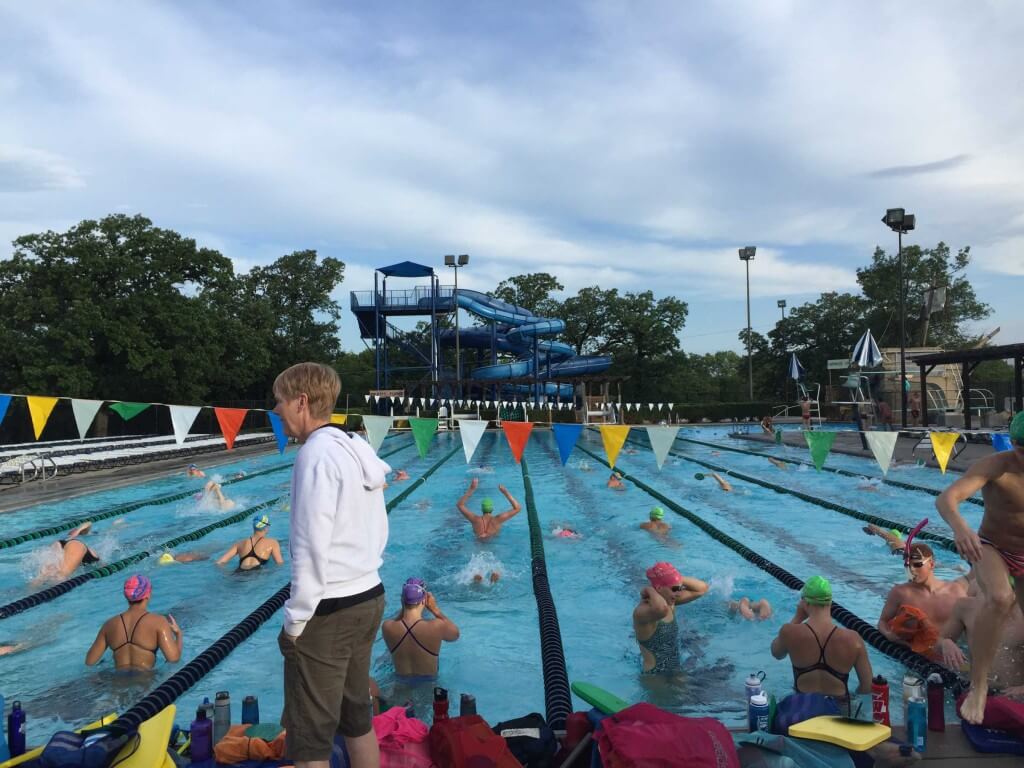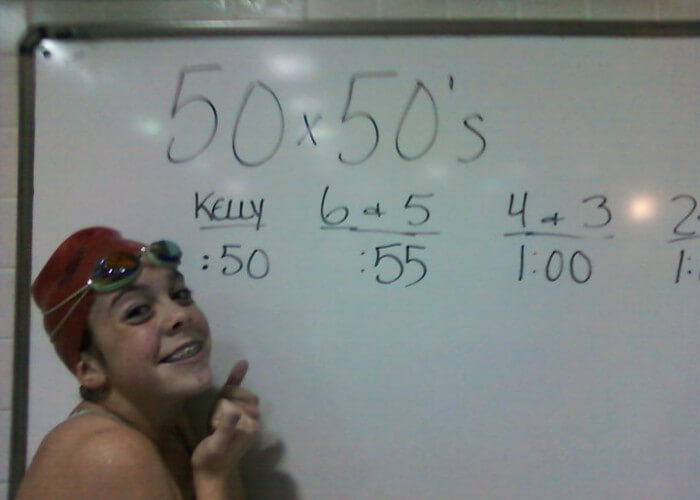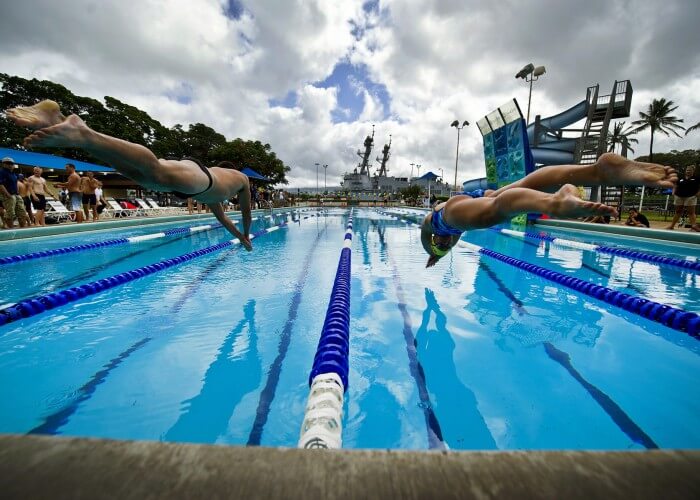3 Tips for Training Smarter, Not Harder…the Old Fashioned Way

By Sarah Lloyd, Swimming World College Intern
There are some sports that have existed essentially unchanged from their inception through to today’s technological advancements– say baseball, football, and soccer. Even with modern equipment, training, and strategy, these games exist almost exactly as they did back in 1910. A touchdown is still 6 points, a grand slam has always been 4 runs, and putting the ball in the back of the net has always and will always be 1 point.
Swimming, though, exists in a weird limbo. The main objective is still what it used to be–touch the wall before anyone else. But swimming is a sport that has benefitted tremendously from technological innovations. From the invention of butterfly in 1933 to multi-million dollar laboratories dedicated exclusively to developing state of the art suits, caps, and goggles that reduce another fraction of a percentage of drag in races, the sport has probably evolved more than any other.
These innovations haven’t stopped at racing either– training in the sport has changed dramatically as well. There are gadgets to fix everything now, handy dandy toys meant to easily correct strokes or focus the athlete better. But what if all of these tools hinder an athlete’s training instead of help it? What if we’re too caught up in the new, the vogue, the innovative to recognize when we need to take a step back and just swim?
1. Yardage, But Not Garbage Yardage
With all of the attention Ultra Short Race Pace Training (USRPT) seems to be getting these days, especially with the success of Michael Andrew, people are understandably and rightly interested in the new method. Let me say right off the bat, I’m not suggesting that USRPT isn’t a beneficial training regimen for some swimmers. In fact, it’s a fantastic training method for sprinters. What I am suggesting is that there is still merit to the more traditional high-volume training that most of us are used to. But as always, there’s a caveat.
The key to a high-volume training regimen is adding value to the volume. Everything an athlete does in the pool should have some purpose, some reason behind it. Mindlessly swimming 8,000 yards in a practice isn’t beneficial until each and every yard swum is oriented towards a specific goal– a set of 40x50s on :45 is mindless swimming until a the goal of hitting 500 pace is assigned to it and 6x200s at a low aerobic level with a focus on maintaining perfect technique makes more sense than a 1200 straight swim just to get the yardage in.
High-volume training still has a rightful place in the sport of swimming. Just because the sport has evolved and moved away from the almost animalistic volume tendencies of the ’80s and ’90s doesn’t mean we should leave volume in the past. Purposeful, goal-oriented volume can be truly beneficial for all swimmers, distance swimmers and sprinters alike.
2. Put the Gadgets Away for a Bit…
Tech Tocs, Tempo Trainers, the Avida System, underwater cameras, Coach Com, Ikkos, and Luma Lanes…the list of new, high-tech gadgets that coaches and swimmers can use to revamp their training seems to get longer and longer and, frankly, can be pretty overwhelming. All claim to “revolutionize” training and give swimmers that new edge in racing, so naturally people flock to these new systems with amazing haste when they’re released.
But what if it’s too good to be true?
Once again, I’m not saying that these tools and systems will always, without a doubt, fail each and every swimmer. What I’m saying is that maybe, if we rely too heavily on these tools for training, we’ll forget how to swim without them. At the heart of this sport is an interesting kind of isolation– it’s you and the water, you and your thoughts, for 90 percent of a workout and 100 percent of a race, so being comfortable with being alone should be a priority.
If we’re constantly receiving feedback from external sources, like a coach through a communication system or an automated voice giving us our splits for every 25, we can lose our ability to really listen to our bodies and interpret for ourselves how we’re swimming.
Self-evaluation is a valuable tool for swimmers–have you even done a pace 50 and just absolutely known that you nailed it? Yeah, that’s the kind of feeling we could be losing if we’re relying on external gadgets to give us feedback.
Again, I’m not saying that we should never use these new systems in practice, but everything in moderation, right? So using a device to show a swimmer a new pace for the first few sets can be super beneficial, but when the swimmer is consistently hitting pace, turning that system off and then asking them to hit pace on their own can be a new, crucial test. Even turning pace clocks off and focusing on just the feel of a swim can have its benefits– sometimes we just get too wrapped up in times and we don’t bother to notice how we feel. So let’s turn the gadgets off for a bit, put the toys away, and just swim.
3. Balance
Before everyone comes at me with torches and pitchforks, I want to say that I’m definitely not advocating for all coaches and swimmers to abandon every innovation that has occurred in the past 20 years and go back to the back-breaking, soul-crushing, animalistic training without thinking. But I do think there needs to be a balance between a more traditional workout method–with a purpose–and the use of new technologies in workouts. The most effective training is smarter, rather than harder, but that can be achieved even without the new gadgets on the market today…or at least with just a sprinkling of them.







Great article!!!
Nice!!
Mark Celaj
Actually, putting the ball in the back of the net has always and always will be one goal.
I loved this article. As ex swimmers and now coach and swim buddy of a young swimmer, we noted the changes in the way the programs nowadays are laid out. At times we do however revert to old school methods which benefits our young swimmer. Still love old school!!
Absolutely